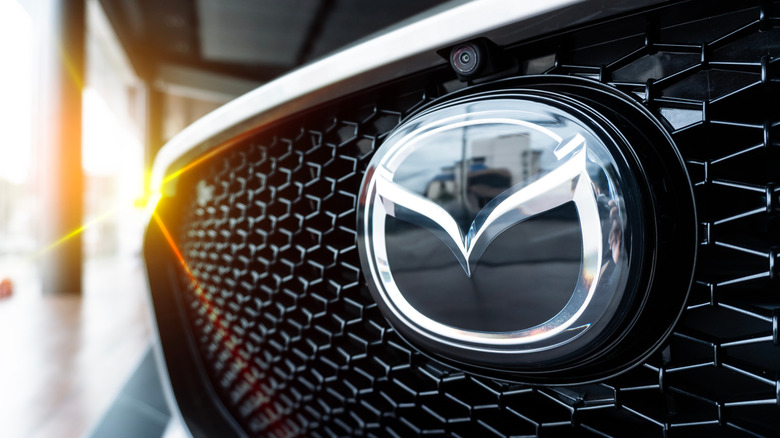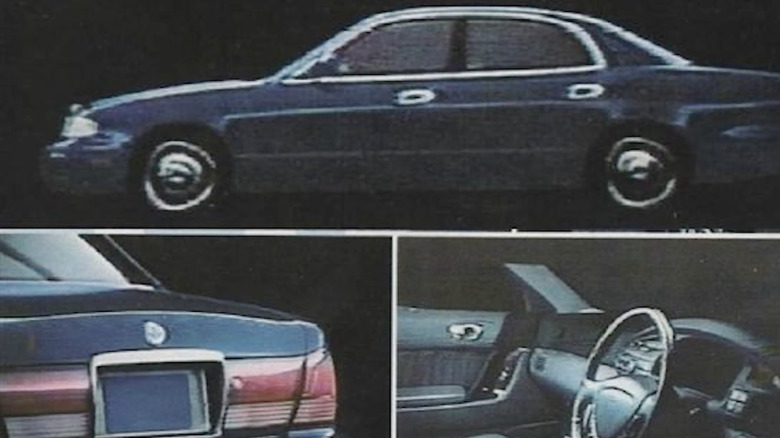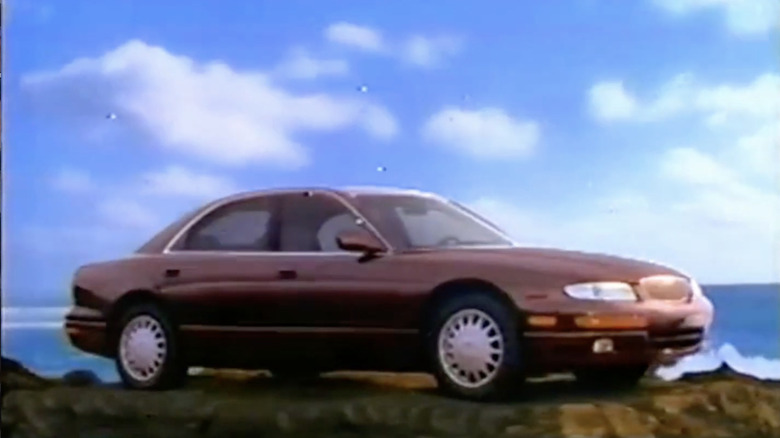What Actually Happened With Mazda's Once-Ambitious Luxury Division?
By the early 1990s, Mazda had already carved out a niche for itself with hits like the nimble MX-5 Miata and rotary-powered RX models. But behind the scenes, it had bigger ambitions — ones that involved rubbing shoulders with the likes of Lexus and BMW. Coming off the back of Japan's economic high in the late '80s, it didn't seem like such a stretch either. Japan's currency had strengthened, businesses were booming, and auto manufacturers were flush with cash and confidence.
So in 1991, they decided to throw their hat into the premium ring. The brand-new Amati division would serve as Mazda's luxury arm in a move that was both daring and logical given the times. A Los Angeles Times report highlights that the company even locked in 67 US dealers, secured office space in Irvine, California, and launched a $75 million ad campaign. They also staffed the division with 35 to 50 employees and set up a separate organizational structure for the brand.
The ambitious V12-powered Amati was meant to rival Lexus and BMW
The jewel of the Amati lineup was to be the Amati 1000, a full-size luxury sedan aimed squarely at the BMW 7 Series, Mercedes S-Class, and the Lexus LS400. But what really made this dream sedan stand out was its engine: an estimated 4.0- to 5.0-liter naturally aspirated V12. It was designed using internals from Mazda's existing K-series V6 engine, only it effectively doubled the number of cylinders. This not only cut down development costs, but also gave Mazda a technical foundation that was reliable.
Another standout feature was the engine's power, estimated at 280 horsepower. Moreover, back then, very few manufacturers outside of Europe were even daring to develop V12 engines. Mazda's entry would've been among the first V12s from Japan, placing it in rarefied company — though it certainly wasn't the only Japanese automaker experimenting with unconventional engines at the time.
The Amati 1000 was to launch in 1994 with prices between $35,000 and $45,000 — an aggressive strategy to undercut its rivals while still delivering on tech and refinement. It wasn't just a concept either, and was properly in motion.
Too little money, too late in the game
Unfortunately, the timing couldn't have been worse. In the very year Amati was announced, Japan's asset bubble burst, triggering an economic tailspin that would later be known as the "Lost Decade." With global recession setting in and internal finances already strained from launching five new models the year before, Mazda simply couldn't afford to keep the Amati dream alive. Over $400 million had reportedly already been sunk into development, and the company was out of runway. Dealers were told the program was off, staff were left in limbo, and the once-promising brand disappeared almost overnight.
Bad luck wasn't the sole reason for the brand's downfall, though. Mazda had also stretched itself too thin. It had other luxury sub-brands like Autozam, Eunos, Xedos, and Anfini, most of which were either underperforming or overlapping with each other. Resources were being spread across too many projects without a clear brand identity. The company was punching above its weight, trying to compete with firms that had far more capital and better-managed luxury divisions.
With the company effectively shutting down overnight, its president, Dick Colliver, later moved to Honda and brought lessons from the failed experiment to Acura — where they were clearly put to good use. As for Mazda, it has leaned back into its strengths and delivered standout vehicles like the Miata and CX line. Sadly, it's never attempted another luxury brand again.


